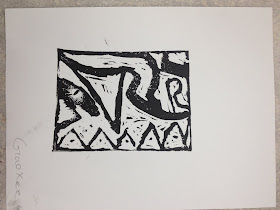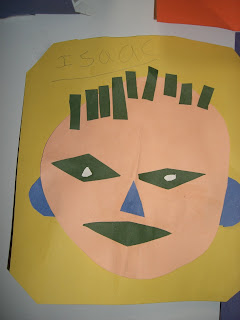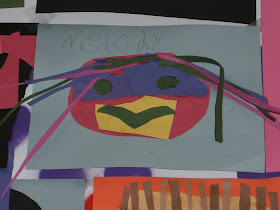Students created these prints during our "abstraction" unit. We used Soft-Kut rubber blocks for this- very safe and easy for 5th graders. Talk about engaged- I could hear a pin drop in the classroom while the kids were working on this lesson. The assignment was to create an abstract composition that had movement.
Wednesday, November 28, 2012
How the World Works: Structure and Function in Art
3rd graders practiced and improved upon their observational skills in this still life drawing activity (thanks for the idea, Princess Artypants). They observed actual flowers in vases and defied their preconceived notions of what a flower can actually look like.
Another component of this lesson was examining the art of Chinese blue and white pottery. Why did they use only blue? How did they paint such precise details? Specifically, we examined the Blue Willow pattern and learned the story behind the pattern. Who knew a vase could tell a story?
Minneapolis Institute of Arts
Today and yesterday, I took my 4th graders to the Minneapolis Institute of Arts. For many of my students, it was their first time in an art museum. I could not believe how passionate they were about all the art that they saw. Their favorite was contemporary!
During their visit, they were required to choose 6 artworks to respond to using Critical Response. Critical response is a set of open ended questions that allows the viewer to construct their own knowledge and understanding of a particular artwork. I use it all the time in my classroom. It is a great way to inquire about an artwork instead of the teacher rattling off a bunch-o-facts!
Saturday, November 24, 2012
Friday, November 23, 2012
Wednesday, November 21, 2012
Who We Are: 1st grade self portraits
Originally, these were going to be realistic self portraits. But as we were creating realistic portraits, I noticed that my 1st graders really wanted to defy the rules of reality through their use of color and form. I ended up making this a two part assignment. Yes, students had to make a realistic portrait. But they also had to make an imaginary one!
We used the rules of symmetry to fold our paper and cut it to make a symmetrical head, eyes, mouth, and nose.








































































